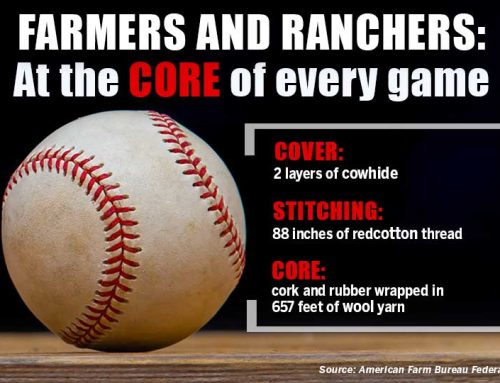By Jennifer Dorsett
It’s National Dairy Month, which makes June one of my favorite months. It’s practically required to celebrate with lots of cheese, yogurt, milkshakes, ice cream, puddings and other dairy-based treats.
And we have a lot of other reasons to celebrate dairy here in the Lone Star State—about 375 of them! That’s the number of dairy farms in Texas, the fifth-largest dairy-producing state in the nation.
Dairy farming adds $628 billion to the U.S. economy annually, equal to just over one percent of gross domestic product (GDP).
Retail sales of dairy products have remained strong since the COVID-19 pandemic hit, continuing to sit at more than 20 percent higher than sales the same week in 2019. In mid-March, grocery stores even saw year-over-year sales of dairy skyrocket as much as 60 percent.
Unfortunately, this year also has seen some very low prices for dairy farmers. Some dairy farmers in other states were forced to resort to dumping their milk this spring, even as many stores limited customers’ dairy purchases to ease shortages.
Why did that happen?
Since the U.S. food supply chain operates on a “just in time” model, dairy farmers were producing set quantities of milk based on expected orders from foodservice, dining establishments and schools.
But demand from those industries dried up overnight as businesses closed their doors to prevent the spread of infection.
And the factories set up to produce the bulk packages of cream, milk, cheese and other dairy products used by schools, restaurants and foodservice manufacturers could not pivot to individual retail packaging without substantial modification.
The result was thousands of gallons of fluid milk left with no place to go besides down the drain.
Meanwhile, retailers were caught off guard by the sudden surge in demand at the grocery store, leaving frustrated shoppers with empty carts and rising retail prices for the same milk farmers were being paid less for.
Now, as the nation has struggled through the shifts in supply and demand, things are starting to swing back to normal. Restaurants and foodservice suppliers are slowly reopening, and retailers have adapted their orders to reflect the increase in consumer purchases.
Dairy prices paid to farmers have risen modestly, and futures—or the price buyers agree to pay for milk products on a certain date in the future—are looking up.
However, it will take dairy farmers a while to find solid ground again after those devastating few months. And despite the common misperception that dairies are “factory farms,” the overwhelming majority—about 95 percent—are family-owned and managed.
During the pandemic, dairy farmers have faced a loss in income, but we can help keep them in business.
One way to help? Eat more ice cream! No, really. Purchasing more dairy products is a way to help dairy farms across the state keep their businesses in operation.
Dairy milk has a host of health benefits that can’t be replicated without some fancy footwork by the plant-based substitute manufacturers.
So choose a gallon of cold milk with your next grocery order.
Another way you can help dairy farmers is by purchasing shelf-stable dairy products like cartons of ultra-high temperature pasteurized (UHT) milk to donate to local food banks or other food aid distribution places.
Call ahead to see what they need. Many food banks also accept donations of fresh or perishable items like refrigerated milk, cheese or yogurt, but they may only do so on certain days or at certain times.
Now that you’ve got the scoop on dairy farming, let’s mooooove on to some fun facts!
Did you know a gallon of water weighs 8.34 pounds, but a gallon of milk weighs 8.6 pounds? That’s right-—a gallon is a fluid measurement, not weight, so even though they’re the same amount, they’re not the same weight. The milk weighs more, because it has a higher density from the milkfat content.
Speaking of milkfat—whole milk is actually a sort of misnomer. If we labeled whole milk the way we label other milks, it would be called 3.25 percent milk.
One glass of whole milk has 8 grams of fat, 8 grams of protein and 150 calories.
Two percent or reduced-fat milk has 5 grams of fat, 8 grams of protein and 120 calories. One glass of skim (or fat-free) milk has 0 grams of fat, 8 grams of protein and 100 calories. All in all, there’s really not that much more fat in whole milk.
And it takes about:
2.5 gallons (21.2 pounds) of whole milk to make one pound of butter
1.25 gallons (10 pounds) of whole milk to make one pound of cheese
1.5 gallons (12 pounds) of whole milk to make one gallon (5 pounds) of ice cream
So, raise your ice cream cones in a toast to the American dairy farmer. They do a dairy good job!











Leave A Comment